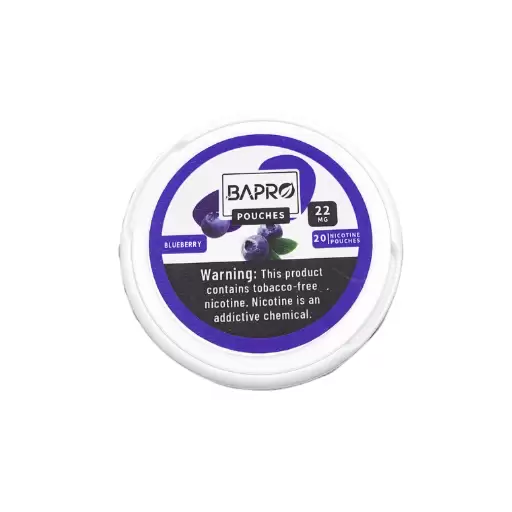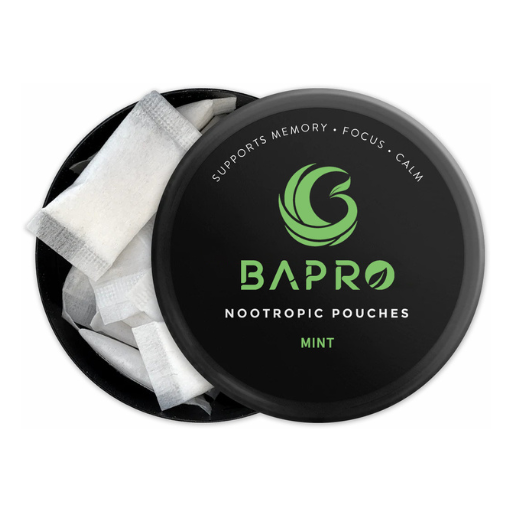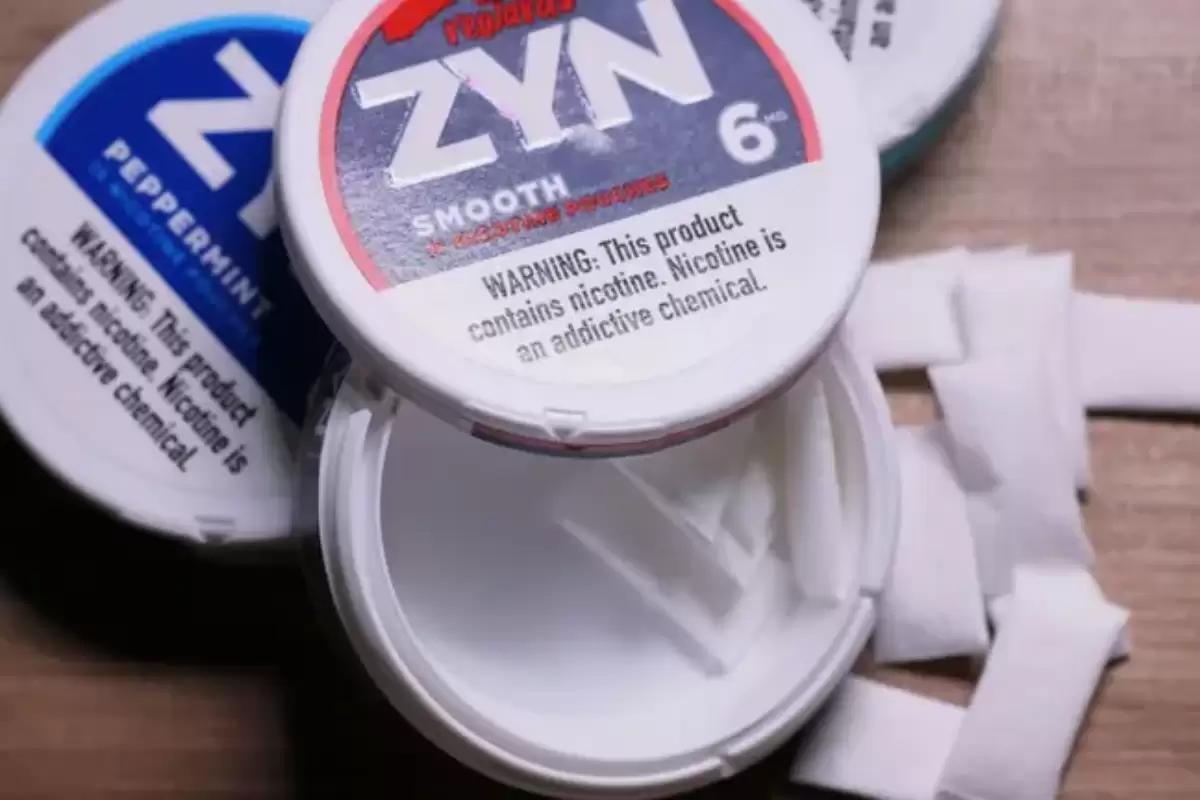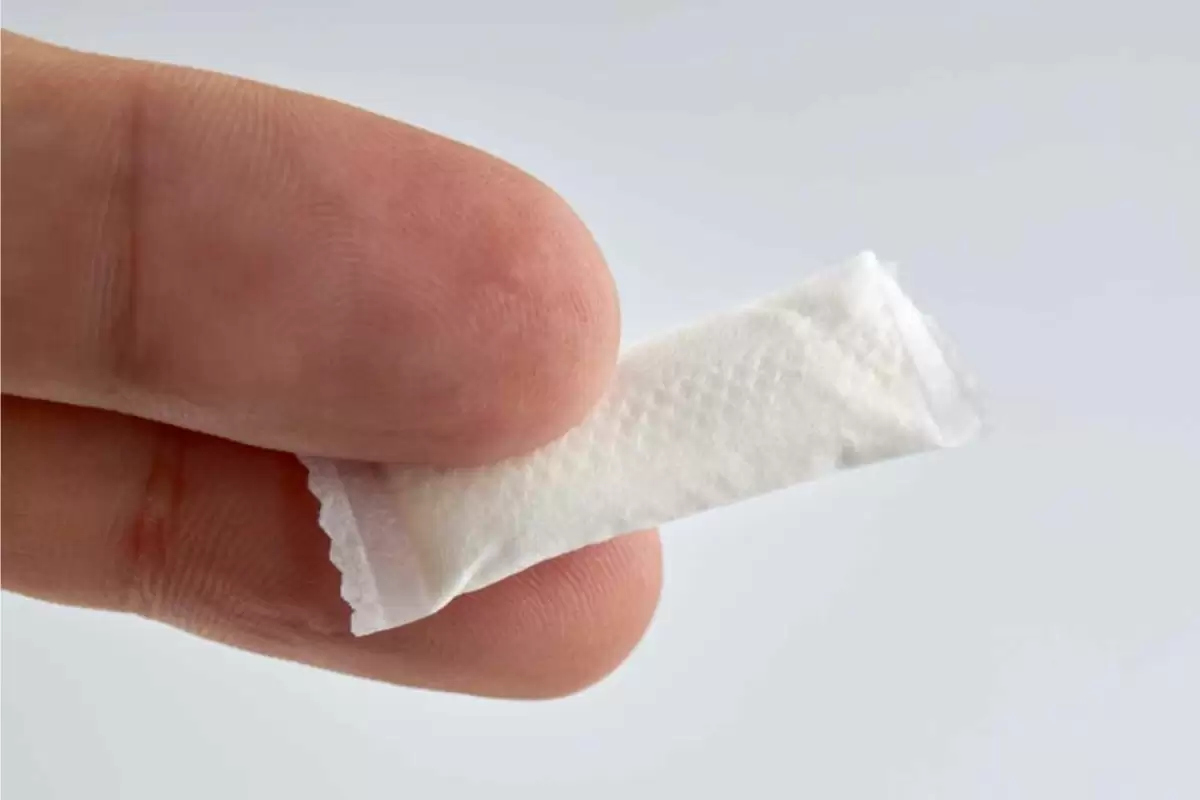The landscape of nicotine consumption is evolving rapidly, with nicotine pouches emerging as a notable contender against traditional smoking and vaping methods. This shift comes at a time when the quest for safer alternatives to combustible cigarettes has never been more intense. The introduction of nicotine pouches by leading nicotine pouches brands has sparked a debate among public health advocates, smokers seeking harm reduction strategies, and those curious about nicotine’s role in contemporary society.
We start with a quick glimpse of the established routes of nicotine intake: smoking and vaping. We know from decades of research that smoking cigarettes harms health. The development of vaping can be seen as a modern iteration derived from smoking. This new concept has been met with a lot of controversy since its inception – largely due to health issues and regulatory action. On the other hand, we have nicotine pouches, another novel route of nicotine delivery. Tobacco-free and smokeless, it provides numerous benefits over cigarettes and even e-cigarettes.
The purpose of this article is to delve into the comparative health risks and safety profiles of nicotine pouches versus smoking and vaping. By examining the latest research, regulatory stances, and consumer testimonials, we aim to provide a comprehensive analysis of whether nicotine pouches represent a safer choice for those looking to mitigate the harms associated with nicotine consumption. Our discussion is grounded in the broader context of public health and harm reduction, seeking not only to inform but also to stimulate thoughtful consideration of the options available to nicotine users in today’s market.

Understanding Nicotine Pouches
Transcending the categories of smoking and vaping, nicotine pouches are an entirely new form of nicotine consumption that bypasses combustion altogether; tiny, discreet oral pouches filled with a synthetic or natural nicotine base, flavours and plant fibre to be placed between the gum and lip, from which nicotine is absorbed through the mucous membranes of the mouth, with a carefully controlled nicotine-absorption profile.
Beyond their subtle nature, nicotine pouches’ usage relies on a basic modus operandi. Because the pouches are passive products that deliver nicotine without smoke, ash or vapor, they eliminate much of the visible indication that their user is consuming nicotine. This would bypass the public smoke and ash aversion of traditional cigarettes, as well as the vapour concerns sometimes associated with e-cigarettes.
These pioneer nicotine pouches manufacturers have been the first to build a thick and robust marketplace, putting out more than 10 existing brands of nicotine pouches already. Each of them comes with varying flavours, nicotine strengths and pouch sizes, offering a flexibility in the delivery system of nicotine for those who want to consume it by traditional oral means. The most common brand names are Zyn, On! and Velo, each brand with a slightly different approach to their products and their market appearances. This move by the industry as a whole has been a drive for diversification and innovation, and in this regard nicotine pouches has been in the frontline in the push for safer and easier means for nicotine consumption.
Now that we’ve dipped our toes into the details of nicotine pouches, we notice that perhaps its growth has to do with the shifting public health landscape. A prioritisation of harm reduction and avoiding the risk of smoking and vaping – both well established – is undoubtedly catalysing the rise of nicotine pouches.
The Health Risks of Smoking
The detrimental effects of smoking tobacco are well-documented and universally acknowledged. It’s an incontrovertible truth that smoking remains one of the leading causes of preventable diseases and premature death globally. This section delves into the harmful impact of smoking on health, emphasizing the urgent need for safer alternatives like nicotine pouches.
Smoking tobacco significantly damages lung health, leading to a range of respiratory disorders, including chronic obstructive pulmonary disease (COPD), emphysema, and lung cancer. The combustion process releases thousands of chemicals, many of which are toxic and carcinogenic, directly harming lung tissue and impairing its function.
Cardiovascular disease is another grave consequence of smoking. The chemicals in tobacco smoke affect the structure and function of blood vessels, leading to increased plaque buildup, which can result in heart attacks and strokes. Nicotine, while addictive, is not the primary cause of these diseases; rather, it’s the myriad other substances released during combustion that are to blame.
Comparatively, nicotine pouches offer a nicotine delivery method devoid of smoke and tar. These products contain nicotine extracted from the tobacco plant, which is then encapsulated in a small pouch made from non-tobacco materials. Users place the pouch between their gum and lip, allowing nicotine to be absorbed through the oral mucosa. This method significantly reduces the user’s exposure to the harmful chemicals present in tobacco smoke.
The comparison between smoking and nicotine pouches in terms of nicotine delivery is stark. While both deliver nicotine, the latter does so without the harmful combustion process, potentially offering a less hazardous alternative for those who seek nicotine’s effects without its smoke-related risks. Dr. Jane Wilson, a renowned public health expert, underscores this point, stating, “While nicotine pouches are not without their own risks, they eliminate the exposure to smoke’s toxic chemicals, marking a significant step forward in harm reduction for smokers.”
This analysis highlights the clear and present dangers of smoking tobacco and posits nicotine pouches as a novel alternative that could mitigate some of the gravest health risks associated with nicotine intake. However, it is crucial to continue research into the long-term effects of nicotine pouches to fully understand their safety profile.
The Controversy Surrounding Vaping
Vaping’s role as a breakthrough alternative to tobacco smoking has been marred by scandals and numerous warnings about its negative health effects. In this section we look at vaping and at its health effects – including those of nicotine pouches – in a little more detail.
Vaping means that somebody has inhaled vapour from an electronic cigarette (e‑cigarette) or similar device. E-cigarettes were meant to be a less harmful alternative to tobacco smoking because they reduce (in theory) the user’s exposure to most of the harmful chemicals that are created when tobacco is burned. Over time, concerns about the safety of vaping emerged as researchers learned more about its health effects.
Vapes were thought to be harmless, but recent studies have shown that some cause respiratory disease and cardiovascular risks. Vaping units, which heat a fluid (usually, but not always, containing nicotine, flavourings and other additives) to heat and produce an aerosol for inhalation, are smoke-free, but this form of inhalation has proven to come with a new set of immune exposures. For example, vaping products have been linked to a condition called e-cigarette or vaping product use-associated lung injury (EVALI).
By contrast, nicotine pouches rely on a different paradigm: one that entirely dispenses with the inhalation of a vapour or smoke. By putting a nicotine- and flavouring-agents-loaded pouch under their top lip, users don’t inhale anything: they absorb nicotine into their body through the oral mucosa. As such, their exposure to the toxic agents present in both smoke and e-cigarette vapour is greatly reduced.
One key difference between vaping and nicotine pouches is the extent of chemical exposure. Nicotine pouches are smoke- and vapour-free, and could potentially help people avoid the respiratory and cardiovascular risks associated with smoking and vaping. ‘A poison-free, smoke-free, tobacco-free tool that can deliver nicotine is an attractive concept, especially in harm-reduction strategies,’ says Dr Liam Evans, a senior research fellow in addiction at the University of New South Wales, Australia.
This inquiry helps to unpack the debates and health concerns surrounding vaping, while pointing towards the potential of nicotine pouches to provide an alternative for nicotine users that involves less harm. Nonetheless, the urgency for future research that enables decision-making must be emphasised. The search for less harmful ways to use nicotine is yet in its infancy.
Nicotine Pouches: A Safer Alternative?
Due to the growing concerns about the impact of smoking and vaping on health, nicotine pouches represent a behaviour that is safer than smoking since they can provide the desired dose of nicotine without the production of smoke or vaping. In the following discussion, This section discusses the healthches and addresses the argument stating that it offers a better alternative to smoking and vaping.
And that’s because nicotine pouches are neither smoked nor are they vaped – catching their distant cyclic cousins in abeyance. Nicotine pouches sidestep the issue of combustion and vaporisation, and thus users avoid inhaling the plethora of toxic compounds that are usually inhaled during smoking and vaping. With nicotine pouches, one can get their nicotine fix in a smokeless manner that requires very little diabolical intervention. This makes nicotine pouches an attractive option for those who might want to reduce their exposure to nasties.
Nicotine pouches present essentially the same health dangers as nicotine itself. People should know that nicotine is highly addictive and increases blood pressure and spikes adrenaline – it can increase heart rate and trigger a heart attack. Therefore, the absence of tobacco in pouches clearly reduces risk of cancer, lung disease and other consequences of both smoking and vaping.
Nicotine pouches would constitute a harm innoculationBecause the conclusions are grounded in evidence for the value of harm reduction, rather than absolutism, experts welcome them. ‘It is early days. We need to be cautious and let the longterm data roll in, and recognise that our evidence is limited. [But] the initial evidence suggests that nicotine pouches may offer harm reduction specifically for those who are unable to quit nicotine use entirely,’ says Rachel Grana, a researcher at the tobacco control research centre at the University of California, San Francisco. Grana says she knows family and friends who have quit smoking by switching to smokeless tobacco and similar products over the decades, ‘but that is a personal experience, since there is limited evidence in the published literature to show that is the case’. The basis of that confidence in what might be called harm innoculation is evidence-based harm-reduction principles.
These long-term consequences (and others) will be explored by the research community in years to come. Ongoing research can close the gaps in our knowledge and ensure that public health recommendations are discretely evidence-based. However, at present, the available data suggest that, for those people choosing to continue nicotine use, pouches could represent a step down the harm-reduction staircase.
Finally, although no nicotine product can claim to be safe, nicotine pouches make a strong case when compared with smoking and vaping as a substantially less harmful consumption alternative. Their tobacco-free, smokeless nature checks both boxes. Do you think their potential for widespread use will eventually make many smokers healthier and longer-lived than they would be otherwise?

Regulatory and Public Health Perspectives
Because of this, regulatory responses to nicotine pouches have often come piecemeal, with different places and different periods subject to varying levels of public health sophistication, shaping regulatory approaches to nicotine pouches in radically different ways. Here, we offer an overview of regulatory responses, public health assessments of relative risks, and how regulatory approaches to nicotine pouches compare to approaches to both cigarettes and to e-cigarettes.
The regulatory status of nicotine pouches varies country-by-country around the world. In some places, they are classified like other NRTs: products that help people to quit. In other places, their novelty and the lack of long-term data on harms to users has led to more hardline regulation. How will regulators balance the likely harm reduction benefits of the pouches against harms from a new form of nicotine addiction (particularly among non-smokers and young people)?
These measures are shaped by public health bodies, which vet scientific evidence on the health effects of pouches, guide regulatory agencies, and communicate risks to the public. The WHO and many national public health institutions are assessing products to develop the most appropriate regulatory responses.
While the regulatory approach towards nicotine pouches is somewhat closer to that of the long-established and widely regulated cigarette – the most well-known recreational nicotine product – than to that of rapidly changing attitudes towards the relatively newer and less regulated e-cigarette, nicotine pouches are in fact a novel product still being actively studied for answers regarding their safety and efficacy as a harm-reduction tool.
Dr Nora Volkow, Director of the National Institute on Drug Abuse in the United States, draws a similar distinction: ‘We need to continue to … fund harm reduction but at the same time not make these pouches look like they’re completely safe and also not attractive to youth.’ Ideally, regulatory frameworks would strike a balance, providing leeway to accommodate changing evidence as more comes in, while still protecting the public’s health.
All in all, regulatory and public health approaches to nicotine pouches are guided by a mix of interests, such as limiting the harms of the cigarette, a precautionary principle in light of our lack of knowledge regarding lifelong exposure to these products, as well as by a desire to minimise initiation to the generation of the future. It can be tentatively concluded that regulatory policies surrounding the deployment of nicotine pouches will likely shift as our understanding of the benefits and risks of their use change.
Conclusion
We have explored, through examination of available studies and expert consultations, the relative risks and adverse event profiles of nicotine pouches in comparison with conventional smoking and vaping. The summary hopefully makes clear how nicotine pouches represent a new breed of nicotine product, free of smoke and free of tobacco, but with all the potential health risks that we know link to nicotine.
That this has led him from cigarettes to vaping and now to the option of nicotine pouches reflects an unwavering obsession with safer methods of experiencing the psychoactive effects of nicotine. There are no risk-free means of nicotine-uptake. But the science suggests that, by eliminating smoke, tar and many associated deadly chemicals, nicotine pouches present a far-less harmful alternative to combustible or even vaporised alternatives.
But that doesn’t mean they should be adopted willy-nilly, without transparency about the evidence for and against them, and without an accumulation of data about how they affect nicotine users over longer periods of time. Public health policy recommendations ought to be based on clear estimates of all harms and benefits in the places where the products are consumed. Our intention is to help people to make the right decisions so as to enjoy a healthy and trouble-free life.
Taken together, nicotine pouches are no solution to the problems caused by nicotine addiction, but they represent one good harm-reduction option among many. For smokers and vapers who want to decrease their exposure to the harmful effects of smoking or vaping, nicotine pouches represent a promising alternative. Like all nicotine products, you need to consider the options in front of you, as research and public health advice evolves.

FAQs: Common Questions About nicotine pouches
What are nicotine pouches?
Nicotine pouches are small, pre-portioned packets containing nicotine, flavorings, and a plant-based filler. They are designed to be placed between the gum and lip, allowing nicotine to be absorbed through the oral mucosa without the need for smoking or vaping.
How do nicotine pouches work?
Upon placing a nicotine pouch under your lip, nicotine is absorbed through the gums into your bloodstream. This method provides a smoke-free and vapor-free way of consuming nicotine, catering to those looking for an alternative to traditional cigarettes and e-cigarettes.
Are nicotine pouches safer than smoking or vaping?
Nicotine pouches do not contain tobacco leaf and do not require combustion or vaporization, eliminating the inhalation of smoke or vapor. This potentially reduces exposure to the harmful chemicals associated with smoking and vaping. However, they still contain nicotine, which is addictive and poses its own health risks.
Can nicotine pouches help me quit smoking?
Some users find nicotine pouches helpful as a smoking cessation tool, as they provide a way to consume nicotine without the harmful effects of smoking. However, they are not officially approved as a quit aid in many regions, and individuals should seek advice from health professionals for smoking cessation.
How long does the effect of a nicotine pouch last?
The duration of effects from a nicotine pouch can vary based on the strength of the pouch and individual usage patterns. Typically, the nicotine sensation can last between 20 to 60 minutes after the pouch is placed under the lip.
Can you swallow saliva while using a nicotine pouch?
Yes, it is safe to swallow saliva while using a nicotine pouch. Unlike traditional chewing tobacco, nicotine pouches are designed for the nicotine to be absorbed through the gums, so swallowing saliva does not diminish their effectiveness.
Are there different flavors and strengths of nicotine pouch?
Nicotine pouch come in a variety of flavors and nicotine strengths, catering to different preferences and needs. Flavors range from mint and fruit to coffee, while strengths vary to accommodate users with different nicotine tolerances.
references
1.”Characteristics of Nicotine Pouch Users and Use Behaviors from the 2019 ITC Four Country Smoking and Vaping Survey“Based on data from an international survey in 2019.
2.”Nicotine Pouches: Market Overview and Future Perspectives“At the same time, future development trends and prospects were discussed.
3.”Perceptions of Nicotine Pouch Use: An Exploratory Study Among Young Adults“It has important implications for understanding the acceptance and impact of nicotine pouches among young people.
4.”Characterizing the marketing and promotion of snus pouches on YouTube“Study analyzes how nicotine pouches are marketed and promoted on YouTube.
5.”Regulation of Nicotine Pouches: Current Status and Future Directions“This article explores the current regulatory status of nicotine pouches.











